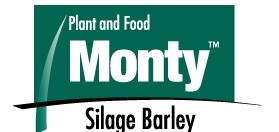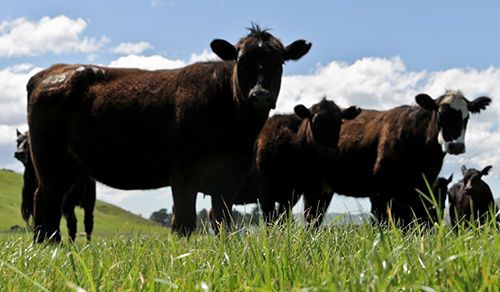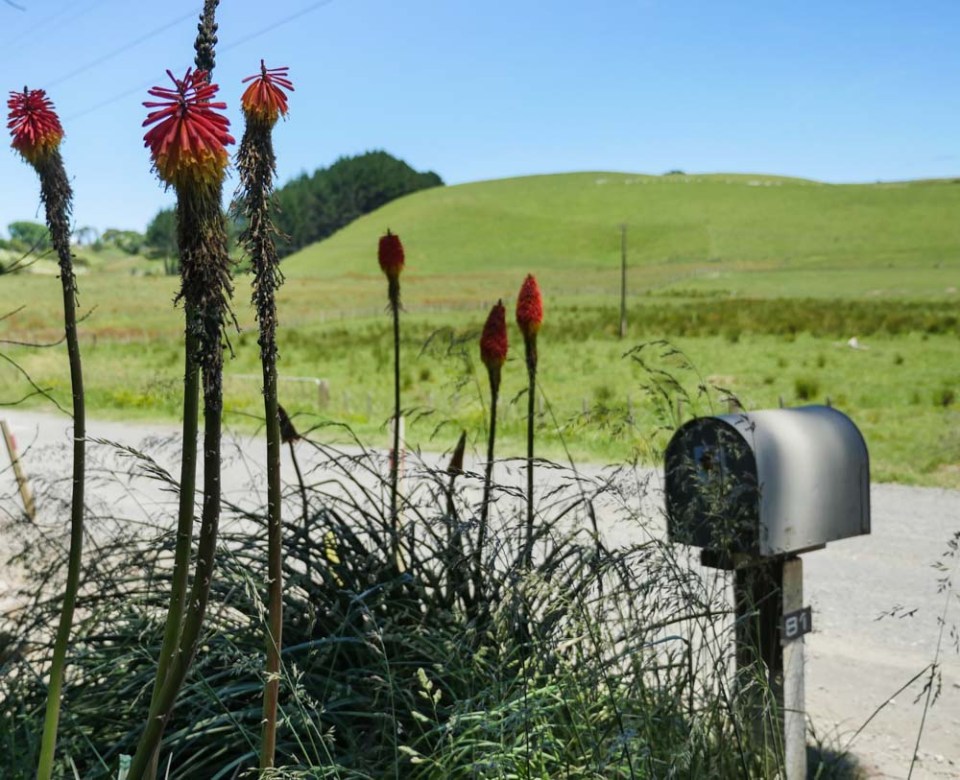Monty
HOODED SILAGE BARLEY.

- Sowing Time September - October
- Sowing Rate 140 kg/HA
- Heading Date Mid
- Grazing Seasons Spring
Monty is a medium-maturity spring barley. It has consistently achieved high grain and silage yields over many trials. Silage quality is very good due to the high grain content. Trials indicate that Monty is capable of producing 14-15 tonnes DM/ha silage crops in Canterbury with irrigation and good management.
Straw strength is also a feature of this variety. Conventional barley has hard spikey awns that remain quite sharp in the stack. Monty is unique in this respect having reduced awns which minimise the damage conventional awns can do to soft, sensitive mouths, reducing animal stress and maintaining animal performance.
Monty has good resistance to all diseases, except scald. Scald is a disease spread by rain splash and is usually worst in wet springs or early sowings. Scald can be easily controlled with fungicides.
Sowing & Establishment
Best results are produced by maintaining a proactive management programme rather than a reactive one, especially with a fast developing crop like barley. Monty should be managed similarly to other barleys. A soil test including soil available Nitrogen (N) is essential to enable an informed decision to be made on N use, as this has a large influence on total yield.
Sowing Monty silage barley is typically sown during September to October in all regions but can be sown in August or November if conditions are suitable. Sow fungicide (Raxil) treated, and optionally Poncho insecticide treated, seed at approximately 150 kg/ha at 4-5 cm depth to establish 275-300 pl/m2 with a N based fertiliser (e.g 200 kg/ha of cropzeal 16 N or DAP). 100-150 kg/ha of urea can also be incorporated before sowing or top dressed soon after sowing in intensively cropped soils where fertility may be reduced.
| Monty: Sowing Checklist | ||
|---|---|---|
| 3-4 weeks after sowing | Herbicide and Insecticide |
If not using Poncho treated seed, then use an insecticide to minimise Barley Yellow Dwarf virus (BYDV) for example, Karate Zeon at 40 mls/ha, can be added with the herbicide. Select and apply appropriate herbicide. Weeds can affect both the yield and quality of cereal silage and can be sprayed at an early stage. Apply up to 150 kg/ha urea as a final fertilizer application (GS 22-29) mid tillering |
| 5-7 weeks after sowing | Fungicide, Insecticide, Herbicide | Apply a fungicide to keep the crop clean as it begins to get more dense (e.g. Proline at 400mls/ha + Seguris Flexi at 600 mls/ha) Add final herbicide if needed for late emerging or tough perennial weeds. Include final insecticide as young plants are sensitive to BYDV e.g. Karate Zeon. |
| 8-10 weeks after sowing | Fungicide | Apply a final fungicide (Proline at 400 mls/ha + Seguris Flexi at 600 mls/ha). In wet/or windy areas where lodging may be a problem during grain filling as head weight increases include the growth regulator Terpal at 1lt/ha (best to do slightly earlier rather than later). Check withholding periods for all chemicals. |
| 13 - 15 weeks after sowing | Harvest (can be 10-14 days longer in cooler environments) | Whole crop silage should be harvested when the grain is at the "cheesy dough or putty" stage and no moisture can be squeezed from the grain. The heads will have been out for 25-35 days and they will have started changing colour from green to light green-yellow. This gives an excellent combination of yield and quality at the ideal moisture content for good compaction (35-38% DM) |
Nutrient Removal/Fertiliser Input
| Approximate WCSS Nutrient Removal from a 10t/ha crop | |||
| N | P |
K |
S |
| 150 | 30 | 170 | 20 |
- Seed Weight 40 grams (per 1,000 seeds)
- Sowing Rate 140 kg/HA, 140 based on a 40 g 1000 seed weight
- Sowing Time September - October
Performance Data
Although yields will be influenced by a number of factors such as fertility levels, timing of sowing and on-going inputs, it has consistently achieved high grain and silage yields over many trials. Trials indicate that Monty is capable of producing 8-14 tonnes DM/ha silage crops in a wide range of environments under good management.
Trials show yields equal to or better than Salute and other commonly used cultivars in the Manawatu, Southland and Canterbury. Superior straw strength is also a feature of this variety.
Monty also has good tolerance to most leaf diseases, but like all barleys, prevention is the best way to minimise disease pressure.

Rotation Products

Read a case study
Agricom Case Studies
